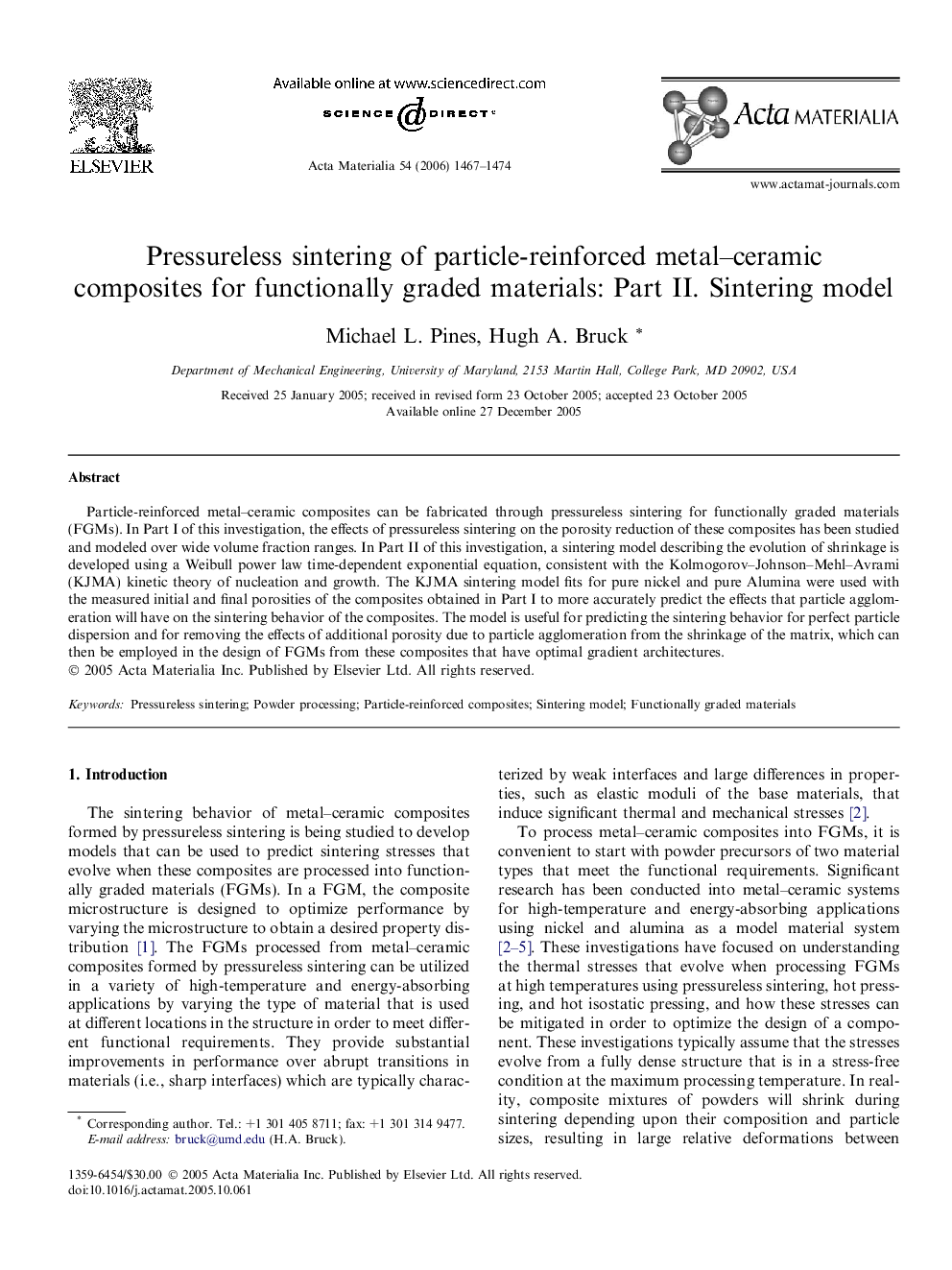| Article ID | Journal | Published Year | Pages | File Type |
|---|---|---|---|---|
| 1450729 | Acta Materialia | 2006 | 8 Pages |
Particle-reinforced metal–ceramic composites can be fabricated through pressureless sintering for functionally graded materials (FGMs). In Part I of this investigation, the effects of pressureless sintering on the porosity reduction of these composites has been studied and modeled over wide volume fraction ranges. In Part II of this investigation, a sintering model describing the evolution of shrinkage is developed using a Weibull power law time-dependent exponential equation, consistent with the Kolmogorov–Johnson–Mehl–Avrami (KJMA) kinetic theory of nucleation and growth. The KJMA sintering model fits for pure nickel and pure Alumina were used with the measured initial and final porosities of the composites obtained in Part I to more accurately predict the effects that particle agglomeration will have on the sintering behavior of the composites. The model is useful for predicting the sintering behavior for perfect particle dispersion and for removing the effects of additional porosity due to particle agglomeration from the shrinkage of the matrix, which can then be employed in the design of FGMs from these composites that have optimal gradient architectures.
